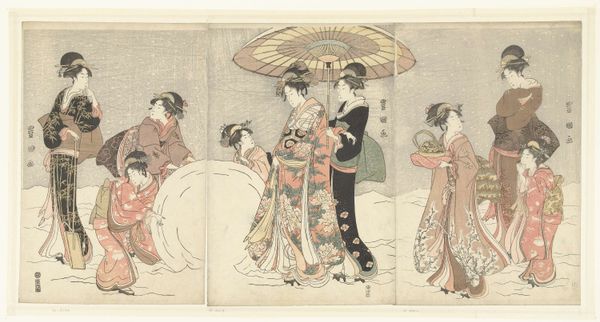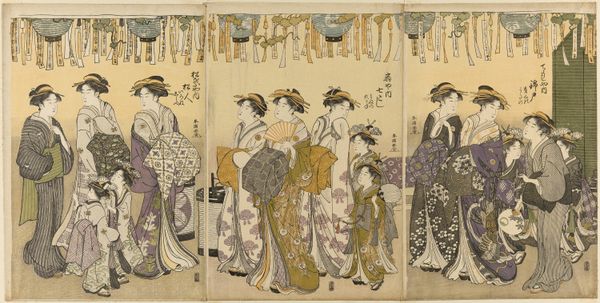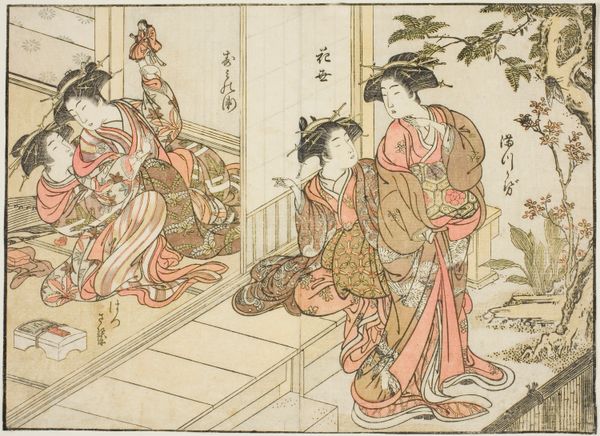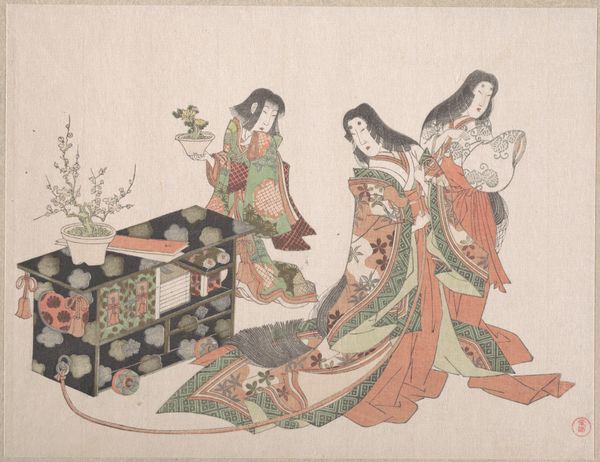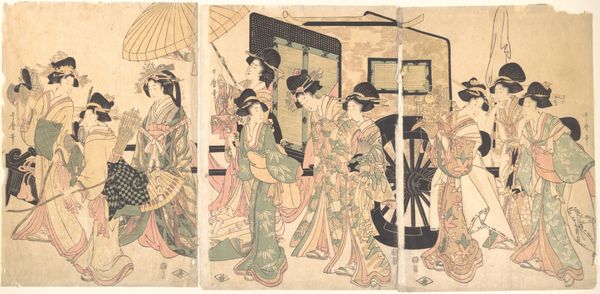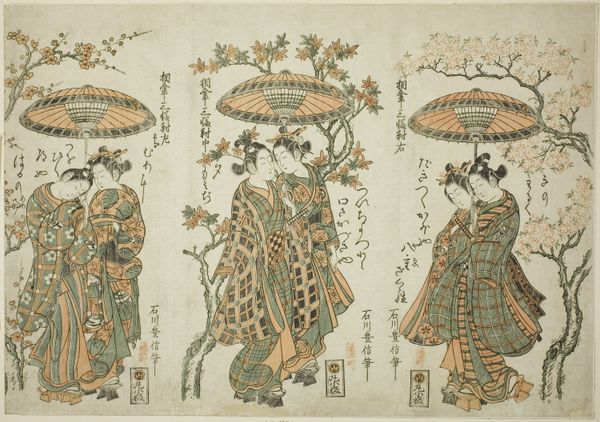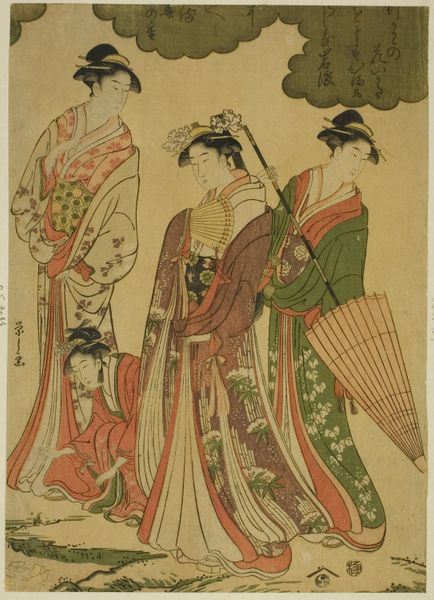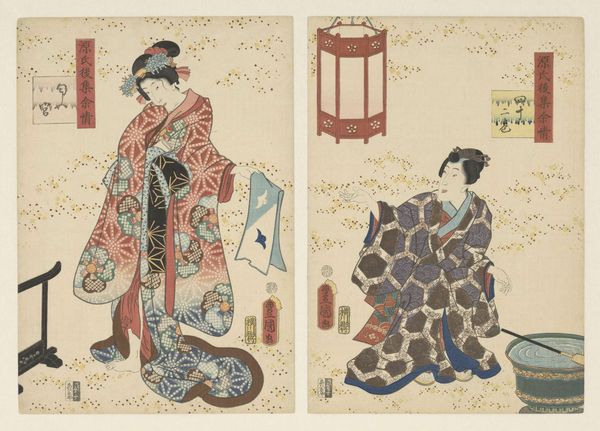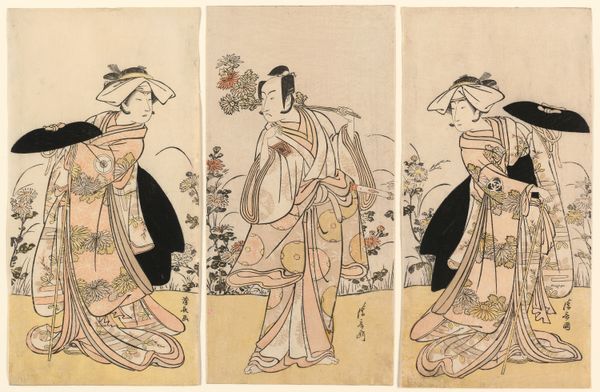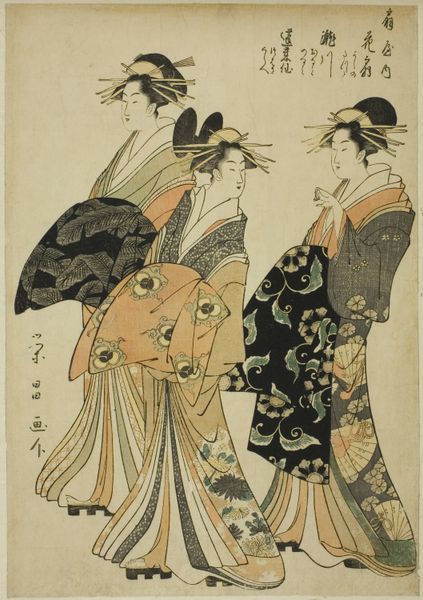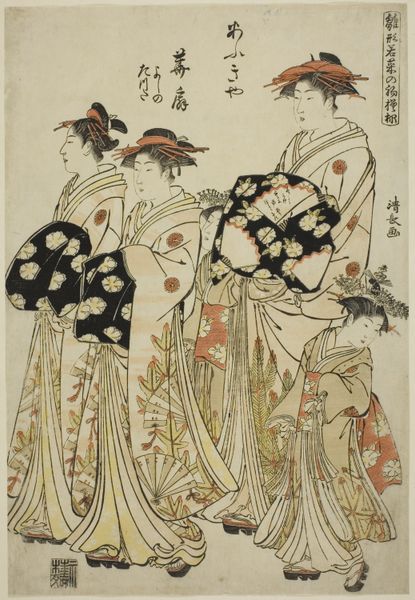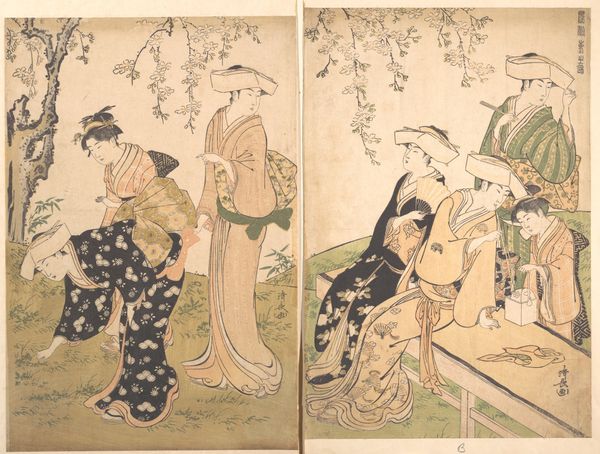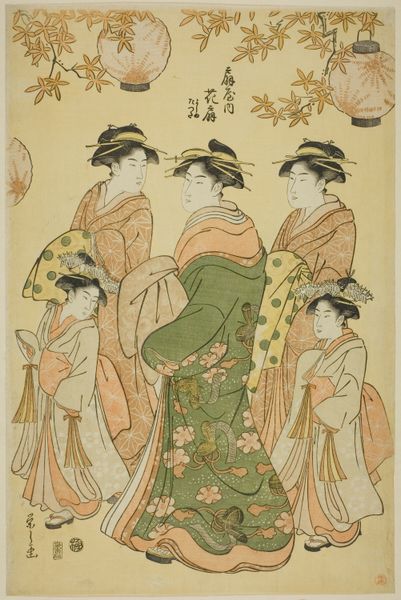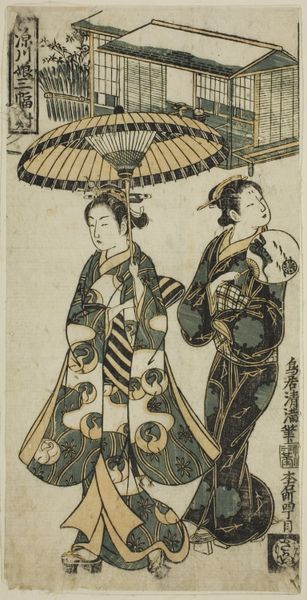
print, woodblock-print
#
portrait
#
water colours
#
ink painting
# print
#
asian-art
#
ukiyo-e
#
japan
#
figuration
#
linocut print
#
woodblock-print
#
genre-painting
Dimensions: 31.1 × 43.8 cm (12 1/4 × 17 1/4 in.)
Copyright: Public Domain
Curator: I am absolutely charmed by the softness and serenity in this Ukiyo-e print. Editor: Right! Here we have "Three Young Women with Pets," a woodblock print created around 1755 by Torii Kiyohiro. It now resides here at the Art Institute of Chicago. Each figure has this incredible balance in the composition. Curator: What strikes me first is how each woman seems utterly self-contained. Look at their gentle downward gazes, almost lost in thought, amidst the flurry of pattern and the playful addition of their little companions. You can tell it's not just about appearances here. Editor: Kiyohiro, working within the Torii School tradition, understood the evolving role of women and popular culture. This was an era of peace but also nascent consumerism and a new urban aesthetic centered around women. Think Edo period Tokyo fashion and the pleasure districts driving the art market. Curator: And what incredible fashions they are! Those gorgeous kimono, all in green and peach hues with natural motifs. Their hair ornaments too – like subtle celestial crowns. It feels celebratory yet peaceful at the same time. Like, a spring day distilled onto paper. And do you notice those cloud-like decorations hanging in space above their heads? How delightful! Editor: Those "clouds," I suspect, are suggestive of specific seasons or even coded symbols within the larger visual vocabulary. It would've provided his intended, contemporary audience cues as to context or narrative that escapes us today. Also, each pet animal suggests similar symbolic reading. The rabbit associates the figure with the moon and the immortal rabbit who lives there and endlessly grinds the elixir of immortality! Curator: Ha! See, even in their stillness, these women seem brimming with story and possibility. The longer I look, the more secrets these surfaces reveal, from the texture of the paper itself to the intentionality behind the colour choices. Editor: I find this print especially fascinating because of its representation of the period and how it demonstrates a visual form that remains aesthetically accessible and impactful even centuries later. It asks, “what is our social relationship with both domesticated animals and art objects? Where do those feelings cross each other?" Curator: Absolutely, and it’s so tender. Each figure is surrounded by beauty, and beauty is enhanced and softened further through the presence of a loved pet. It asks us, the viewers, how we, too, make space for beauty. Editor: A perfect point to pause and ponder that idea. Thank you.
Comments
No comments
Be the first to comment and join the conversation on the ultimate creative platform.
